More than six decades after her death in 1954, Frida Kahlo continues to captivate the public’s imagination. The story of her life’s struggles has become a metaphor for the challenges we each face in life: everyone is Frida in that everyone suffers in one way or another.
Yet despite the thousands of pages written about her in books, articles, academic studies, and despite a Hollywood film starring Salma Hayek and Alfred Molina, much is still being discovered. Even the exhaustive (and exhausting) exhibition “Frida Kahlo: Appearances Can Be Deceiving” at the Brooklyn Museum in 2019—the largest museum show in the United States dedicated to the Mexican icon—does not tell all.
The broad strokes of Kahlo’s life have been well researched and are known to the general public. Yet significant details remain to be unearthed.
|
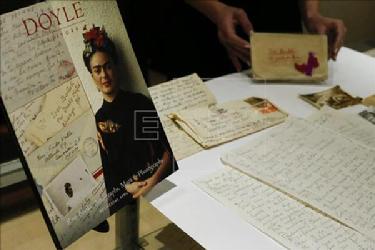 |
| Auction of Frida's letters to Bartoli, Doyle New York |
|
Consider the sweeping omission in Hayden Herrera’s highly acclaimed book Frida: A Biography of Frida Kahlo, published in 1983 by Harper & Row. Nowhere in the 528-page book does Herrera once mention José Bartoli, a Catalan painter Frida Kahlo met in New York, with whom she fell madly in love and was prepared to leave her husband, Diego Rivera, to pursue a life with the exile.
That between 1946 and 1949 Frida carried on a mad love affair, secretly meeting with Bartoli in Mexico and the United States and leaving behind more than a hundred pages of love letters to him, diminishes in no way Herrera’s work as an “authoritative” biography. Herrera does mention an affair with a “Spanish-refugee painter” in New York, who remains anonymous in her book; his identity is revealed after his death in 1995. The truth, more importantly, is that had she had her way, Frida would have abandoned Rivera to marry José.
Frida’s love letters to him were discovered by his heirs more than two decades after his death. They were auctioned by Doyle New York; the 25 missives sold for $137,000 on April 15, 2015, to applause from the audience.
Another peculiar omission in the biographies is Frida’s relationship with jewelry. More specifically, Frida’s enchantment with earrings sheds light on her personality and unhinged state of mind and speaks of her complicated relationship with giving and soliciting tokens of friendship.
|
 |
| Frida's "Mexicanidad" |
|
Frida’s endless need for affirmation in many ways stemmed from the relatively frugal circumstances surrounding her upbringing. In Mexico in the first half of the twentieth century, bourgeois aspirations centered around one’s credentials as being bona fide middle class. The Kahlo family faced obstacles in making such a claim. Her father, Guillermo Kahlo, an immigrant, made his living as a photographer. Her mother, Matilde Calderón, dedicated herself to her family and had few interests outside the home. The Kahlos were not wealthy, but for the most part they led comfortable middle-class lives.
Apart from providing for his family, Guillermo inculcated a sense of civic engagement in his children. In 1920s Mexico, after the exuberance of the Revolution, there were ideas about what it would take to make Mexico modern—and who could do it.
Revolution did not entail egalitarianism per se; Revolution envisioned the guiding hand of the intelligentisia. Mexican society, then as now, considered its indigenous peoples to be barriers to the nation’s future. The multitudes of uneducated masses were seen as lacking ambition They clung to tradition and were seen as rejecting scientific progress and embracing superstitions.
The Kahlo family’s finances did not match their aspirations as the Great Depression gripped the world: their idealism was tempered by a tight budget. Indeed, for the Kahlo family, money did not come easily in Depression-era Mexico. Frida’s father had prospered under the ancien régime, but he struggled to find his footing as Second World War approached.
Frida had to work to help out with household expenses. Embarrassed, she lied to her friends, who were given allowances by their parents, telling them she worked as a cashier in a local pharmacy to save money to travel to the United States. She proved an inept clerk, incapable of reconciling her cash register at the end of her shift. On occasion she gave the owner her earrings as collateral when her drawer was short.
There were other factors undermining her self-esteem. Frida, a mixed-race girl, sought acceptance among her school friends, most of whom were white. She couldn’t transform herself into a blonde, blue-eyed girl, so she decided to forge a contrarian identity. When her friends lookiedto fashion magazines from Europe and the United States for fashion and modernity, Frida championed Indigenous Mexico.
Herrera writes: “The young girl who three years before had entered the National Preparatory School wearing pigtails and a German high school uniform was now a modern young woman, touched by the headlong buoyancy of the twenties, defiant of conventional morality, and unfazed by the raised eyebrows of her more conservative school friends. The fierce originality of her new persona is visible in a series of photographs taken by Guillermo Kahlo on February 7, 1926. There is a formal portrait in which she carefully hides her thinner right leg behind her left one and wears a strange satin dress that has nothing to do with the 1920s fashions.” (i)
Herrera, an American who misunderstood Mexican society and cultural norms, did not know that among Mexican working classes, satin is seen as a dressy fabric used for special occasions. Frida emulates the tastes of the proletariat, her ideas about social justice evolving along with her taste in clothes. Her homage to Mexico’s working class is lost on her Gringx (ii) biographer.
|
| “An honest expression of my own self” |
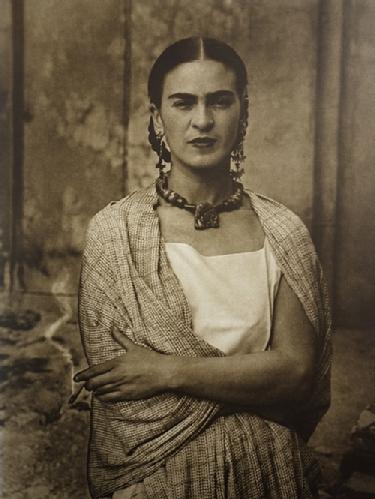 |
| Frida |
|
Frida’s enthusiasm for Indigenous Mexico is one reason she was obsessed with earrings: they were a bold affirmation of egalitarianism. Silver earrings were within the means of almost every young girl in Mexico, regardless of economic background.
In his early years in Mexico, Guillermo had worked at La Perla, a jewelry shop owned by a German immigrant. Sterling silver earrings were flamboyant and sensual, exotic and erotic. Encouraged by her father, Frida began wearing indigenous earrings, elaborate sterling silver ones that were sold in shops and in markets all over Mexico City. This allowed her to assume a femininity .
The world is full of amusing ironies: communists interpreted an indigenous affirmation of pride as a desire to mock the despised bourgeois. When she married Diego Rivera, a communist so communist he was expelled from the Mexican communist party when he complained they weren’t communist enough, Frida decided to mark the occasion by wearing the dress of the oppressed Mexican proletariat, which, with unintended irony, included her family’s servant. “I asked the maid for skirts, the blouse and rebozo were also borrowed from the maid,” Frida, in all her bourgeois charm, confessed. (iii)
What is admirable in her sartorial choices is the young Frida’s early affinity for earrings. These were within her means and affirmed Mexicanidad—the romantic nationalism that sought to affirm a Mexican identity that transcended Spain’s colonialism and U.S. cultural influence. Adopting indigenous styles in dress, accessories, and hairstyles was, as she said, an effort “to be worthy, with my paintings, of the people to whom I belong and to the ideas which strengthen me.” (iv)
In time, Frida began the practice of buying sterling silver earrings, wearing them for a few months, and then giving them away as tokens of esteem.
“If receiving gifts was a way of bringing the world to her, giving was a way of extending herself out into it, and of confirming her relation to people,” Herrera writes. (v) And it worked. Consider that in a letter dated May 3, 1939, Peggy Guggenheim confides in Frida, “I wear your beautiful earrings and they are greatly admired, and I like them better than any I have.” (vi)
This practice was often reciprocated: Pablo Picasso gave Frida tortoiseshell earrings; Bartoli gave her a pair of earrings, which she cherished, as a token of his love for her.
|
 |
| Raquel, the Beauty Queen that Captivated Frida Kahlo |
|
If Bartoli remained unknown to most people until his death in the 1990s, another person has also been absent from accounts of Frida’s life.
Rosa Raquel Romero, known simply as Raquel, was a beauty queen from the provincial seaport of Campeche, renowned for its history of pirates. Raquel spent most of her life in Mérida, the Yucatán capital.
Raquel, fifteen years younger than Frida, gained national notoriety in the 1940s. The first celebration of Carnival, or Mardi Gras, in Mexico was authorized by the Spanish Governor of Campeche, Guillén de las Casas, in 1582, making it the oldest carnival on the mainland of the Americas. Raquel, in 1941, at age 19, was crowned the first Queen of Mexico’s modern-era Carnival. Her image was flashed across the country, and she became a celebrity.
Raquel was inundated with telegrams from well-wishers and admirers invitating her to Mexico City, Guadalajara, New York, Havana, Madrid, and Paris.
In a whirlwind tour of the Mexican capital later that year, she met Diego Rivera and Frida. “I was so young and unsophisticated at that time,” she wrote in her diaries. “I had met the masters—José Clemente Orozco and David Alfaro Siquieros—and it was thrilling. But when I was invited to meet Diego, well, Frida came over, took me by my hands, kissed me, and she gave me such a hug!”
And then Frida did something unexpected. “She looked at me, smiled, and proceeded to take off her earrings and, handing them to me, said, ‘Take these, because only you can make them sparkle the way they should! You are Venus incarnate!’”
This was the first of five pairs of earrings Frida gave Raquel over the years.
Raquel was oblivious to how fascinated Frida had become of the young beauty queen. “Of course, at the time, Frida was unknown. She was simply Diego’s wife,” Raquel would say in an interview in 1983. “The earrings were a generous gesture, but it was a peculiar thing to do back then; Mexican designs were not fashionable in the least.”
|
| “I’m off to the City of Lights!” |
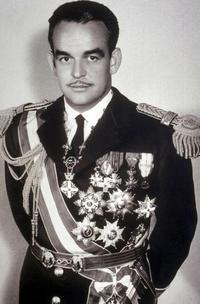 |
| Prince Rainier, a descendant of a Mexican woman |
|
Raquel didn’t think of the earrings, or of Frida’s infatuation: Europe beckoned. The war was over and this was an opportunity to use the Continent as a base for extended travels. The highlight of her visit was Monaco; Rainier had extended an invitation to her. (The prince had Mexican blood; his father’s mother was Susana de la Torre y Mier, a Mexican who married Count Maxence de Polignac in 1881. One of their sons, Count Pierre Marie Xavier Raphaël Antoine Melchior de Polignac, would father Rainier.) “He wasn’t sovereign yet, but he was charming and solicitous,” Raquel recalled. “He became ruler of Monaco three years later when Louis II died.”
Introductions were made, allowing for travel to Morocco and throughout the Middle East. “The most beautiful city—apart from Paris and Venice—has to be Isfahan,” Raquel said of the Iranian city renowned for its Perso-Islamic architecture. She spent fourteen months in Europe and nine traveling throughout North Africa, the Levant, and the Middle East.
|
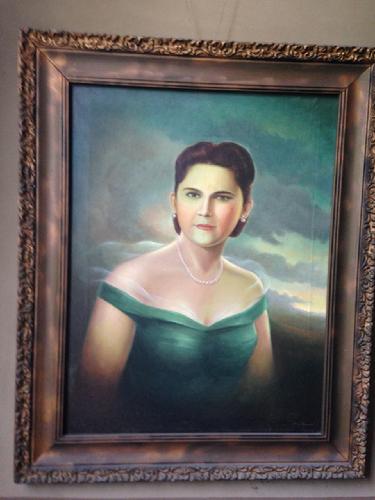 |
| Rosa Raquel Romero Segura, Official Portrait |
|
When Raquel returned to Mérida, she brought along her one extravagance: a Bedouin tent from Casablanca.
By then, she was a married woman, intent on settling down away from the dizzying attention she had received. Her mother, María de la Cruz Segura Rosado, herself an exceptional beauty, gave her sensible advice Raquel recalled verbatim: “Every day, thousands of young women turn eighteen—and it is their turn to shine. Every day, you are one day further away from eighteen, closer to the sunset of your beauty.”
“I never forgot that,” Raquel said. “Otherwise the lies men tell would have gone to my head!”
When her purchases arrived by steamer three months after she had returned to Mérida, she unpacked the Bedouin tent. Her husband, Arnaldo Salazar, was exasperated. He wanted to know if she had a good reason for coming back with that tent.
“Dinners!” she said.
And dinners she had: four times a year—to commemorate the arrival of spring, summer, fall, and winter—she would have an intimate dinner party in that tent.
The dining room in their home in the García Ginerés neighborhood would be cleared of everything, including the chandelier, and the Bedouin tent would be set up. Then she would have dinner for ten: a tent inside the dining room, mischievous fun. “Who knows?” Raquel asked, reminiscing. “I told my husband that Frida and Diego might attend, if not for dinner in a tent, then for my summer party.”
Although Frida and Diego had traveled to the Yucatán—he famously studied Uxmal while preparing for his mural at the National Prepatory School—in the 1920s, they never were able to attend one of Raquel’s summer parties.
Now, about those summer parties Raquel held.
As is common in Mexico, Raquel didn’t celebrate her birthday, which was seen as appropriate only for children. Instead, she had a grand party on her name day. This tradition celebrates the day associated with the saint of one’s given name. Rosa would accordingly celebrate Santa Rosa’s day. Raquel’s given name was Rosa, and Santa Rosa of Lima ‘s feast is celebrated on 30 August in Mexico.
Raquel had not been back from her trip for more than a month when she wrote to Diego and Frida. Weeks later, Frida replied by post. She regretted that their commitments prevented them from traveling to Mérida. Frida had been awarded the National Prize of Arts and Sciences in 1946. Around this time she had begun to experience side effects, including hallucinations, from the morphine she was taking for pain. A summer visit was out, but nonetheless she sent a pair of earrings.
“These are nicer than the ones I gave Mrs. Alemán,” Frida wrote. “I have had these for many years—and I hope with all my heart that you will enjoy them for many decades!”
Beatriz Velasco de Alemán was Mexico’s First Lady at the time.
Raquel called Frida to thank her, extended another invitation to visit Mérida, and promised to visit her in Mexico City on her next trip to the capital.
In 1948, when Raquel traveled to Mexico City—her husband was on business—she paid a visit to Frida, then recuperating from surgery.
“She was holding court, with admirers and well-wishers all around her,” Raquel said. “But she shooed them away so we could have a private talk. And then, she reached for my hand, told me she wanted to visit Mérida for my August party. I told her I would pray she would be well enough to travel. Then she asked the nurse to hand me an envelope. I opened it and it contained a pair of earrings! They were hers, she told me, but she wanted me to make them shine as only I could. I was so embarrassed.”
This was the third pair of earrings Raquel received from Frida.
“I was embarrassed, but I could see how happy she was to give them to me,” Raquel said. “It was almost as if she affirmed her own existence by trying to make me happy. It was touching—and sad: Frida was a black hole of neediness.”
|
Raquel, mother to a second daughter by now, turned her attention to her family, while the peculiar Frida remained in the distant capital. For people in Mérida at the time, Havana was more appealing than Mexico City, both because of the cultural ties and the ease of travel; it was more convenient to travel to Havana than Mexico City.
Besides, Raquel had family in Cuba.
Her older brother, Rafael, was a successful businessman in Havana in the 1940s and 1950s. In fact, he was such a fixture in Havana’s high life that, when it was time to celebrate Mexican Independence Day, Mexico’s ambassador to the island nation—Gilberto Bosques—turned to Rafael to make arrangements for celebratory dinner parties. He relished this distinction and accepted these assignments with his characteristic joie de vivre.
When Raquel arrived for one of her first visits, her brother introduced her to the diplomatic community accredited to Havana. It was then that she befriended Florence Pritchett Smith, wife of the U.S. ambassador, Earl E. T. Smith.
“No one at the time knew Earl would be the last U.S. ambassador before relations were broken off,” Raquel said decades later. “But before the … complications between Washington and Havana … it was … grand.”
(Daniel Braddock was serving as chargé d’affaires ad interim when JFK severed diplomatic relations in January 1961.)
In no time, the Mexican beauty was introduced to Cuban businessmen, socialites, and women of extraordinary beauty, a circle that centered around the social calendar of the Vedado Tennis Club and the extravagant goings-on at El Tropicana nightclub and casino. Raquel met the notorious Cuban beauty and socialite Natalia Revuelta Clews, whose husband, Orlando Fernández Ferrer, was a renowned physician. Natalia was also, for a time, Fidel Castro’s mistress and bore the Cuban leader a daughter, Alina.
Raquel was confident enough to look past the sexual mores in Cuba at the time; she was reluctant to countenance such comportment in her own life. Her brother, Rafael, was quite the opposite, delighting in the libertine attitudes of the Cubans.
That was, of course, until he was seduced by a Cuban beauty—and married the most desirable Zenaida Pantaleón Hernández.
|
| “A Rivera mural in El Capitolio!” |
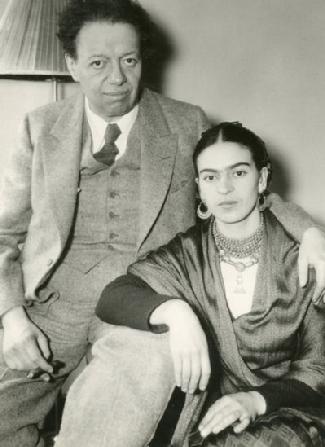 |
| Diego and Frida |
|
During her third visit to Havana Raquel mingled among the circle of Cubans, émigrés, and immigrants to the island her brother cultivated. At an alfresco lunch that María Luisa Gómez Mena, Countess of Revilla de Camargo, held at her brother’s mansion in the Vedado district, the famed Mexican muralist—and his intriguing wife, Frida—were the subject of discussion.
“I showed off the earrings Frida had given me, and they were remarked upon,” Raquel said. “Were they beautiful? Of course they were. But they weren’t from Harry Winston! Yet, everyone was intrigued. When Consuelo [Vanderbilt Balsan] asked about them, I said ‘They are mementos from a friend with a good heart.’”
When asked “Who?” she replied, “El maestro Diego’s wife.”
“Consuelo gasped, and then confided she was convinced Diego would get a commission for a mural for the Capitolio,” Raquel said, referring tot he National Capitol Building, the Capitolio Nacional de La Habana, the seat of the Cuban Congress before the Revolution.
Natalia, who had worked at the U.S. Embassy for a time, remained well informed through unofficial sources, gossip, and common sense. She knew the Americans were against the Mexican muralist being invited to the island.
“Earl was aghast at the possibility that Diego would start painting communist images all over the Capitolio, especially after that unpleasant quarrel with Mr. Rockefeller in New York,” Raquel recounted, amused at how blindsided everyone would be once Fidel assumed power. “But I’m still convinced that, despite speculation of Rivera murals in Cuba, there was an element of disdain for Diego and Frida among the beautiful set in Havana.”
In one note Natalia sent Raquel, the Cuban socialite refers to Frida as esa lisiada fea, “that ugly cripple.”
Raquel had no appetite for intrigue or disparaging contempt for others. She was also not a fan of the name of one person being credited to the thoughts of another. Raquel let it be known she was peeved when Consuelo claimed that one could avoid awkward social situations with “the simple rule of not accepting an invitation I do not wish to return.” Raquel is the one who had first advised Consuelo that “one should never accept an invitation one was not prepared to return.”
“She stole my witticism!” Raquel said, laughing. “I expected more of her, but the only person I fault is her godmother for not training her better.”
Consuelo’s godmother was another Cuban beauty, Consuelo Montagu, Duchess of Manchester, née Consuelo Yznaga.
As the decades passed, silly episodes such as these meant nothing to her. Raquel became resigned to the ways of the world.
She could recount other instances of appropriation with humor: “Everyone knows it was Florence who, in her time in Havana, became convinced that meals prepared with what was seasonal and local were the best, and then Jeremiah Tower comes along and thinks he invented the concept at Chez Panisse,” she said, laughing, shaking her head. “It was Florence who said, ‘Foods of the season arouse the strongest desires.’” (Jeremiah Tower emigrated to Mérida after his culinary career ended.)
Raquel had little patience for the low cattiness of Havana as the 1940s became the 1950s.
Rafael, on the other hand, loved it all. He was mesmerized by the bickering and intrigue, the faux offenses over petty things, the brazen escapades of Havana’s rich, powerful, and criminal. He delighted at the attention his sister generated and encouraged her to stay. “He wanted her to move to Havana,” Zenaida says. “It’s a good thing she didn’t listen to him.”
Raquel knew instinctively that Havana’s surrealism could not go on.
|
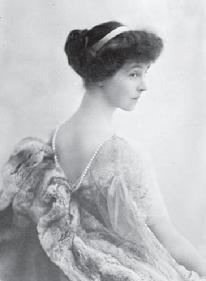 |
| Consuelo Vanderbilt Balsan |
|
|
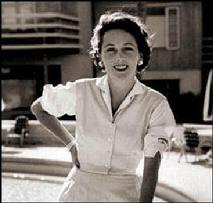 |
| Florence Pritchett Smith |
|
|
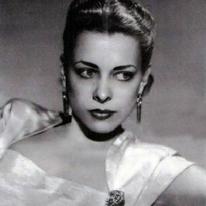 |
| Natalia Revuelta Clews |
|
|
| “Always make them your own!” |
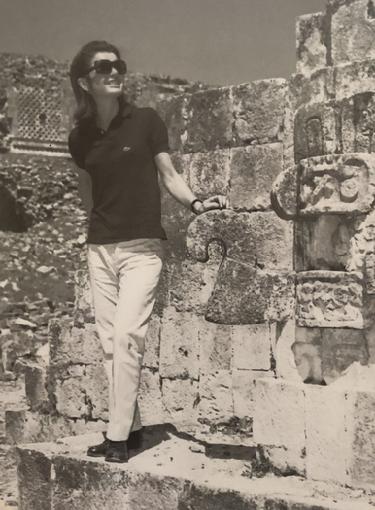 |
| Jacqueline Kennedy |
|
Raquel returned to Mérida, warning her brother about the deteriorating sense of place in Havana. “It’s almost as if the laws of gravity are weakening in Cuba and people seem to float,” she told him. Rafael dismissed her concerns out of hand.
In the 1950s she concentrated her energies on attending to her husband and raising their two daughters. After learning that Frida was not well, Raquel made plans to travel to Mexico City should the need arise on short notice. When Frida was hospitalized for almost a year, Raquel visited her there. This was in early 1951. On this trip she took her elder daughter, Sibila Concepción, who wanted to see the sights of the Mexican capital.
At that time, Frida gave her two pairs of earrings. “She was so kind,” Raquel recalled. “One was for me and the other for my daughter, Sibi. She wanted us to wear them at the same time—mother and daughter—and to remember her when we did.”
It was a bittersweet visit.
“I didn’t know this would be the last time I would see her, or course. How clearly I remember that she was still furious with María Felix for having slept with Diego, giddy at having been admitted to the Communist Party, and talked about how Self-Portrait as a Tehuana was her boldest statement. I could tell she was addicted to painkillers, and I didn’t understand why she continued to smoke incessently,” Raquel said, then paused to reflect. “Manic. Manic. Manic. I suppose that in her own way, she was able to describe her disappointment in the world in a way no one else could.”
She returned to the Yucatán and picked up where she left off: one grand dinner party in her Bedouin tent to commemorate the arrival of each season; her al fresco Santa Rosa summer party under her mango tree; and select cocktail parties for luminaries.
Calamities, however, were on the horizon. When Frida died three years later, Raquel made a point of visiting Diego to express her condolences. She returned one pair of earrings to him. He refused at first, but she told him, “I already have three sets and my daughter has a pair.” Then he took them, held them in his hands, and kissed them, tears in his eyes. And he kissed her hand in gratitude.
This was only the beginning of Raquel’s misfortunes. When the famed Mexican actor and singer Pedro Infante visited Mérida, he asked to meet her, and she held a cocktail party for him. He toasted her and then sang “¿Quién será?” while holding her hand in front of the assembled guests. She was greatly embarrased.
Three days later, on April 15, 1957, the plane Infante was copiloting crashed shortly after takeoff from Mérida’s airport. His death shook her, coming after Frida’s death, a suspected suicide. And then, two years later, her beloved husband, Arnaldo, was murdered. In brief: Arnaldo’s mistress demanded he leave his wife and daughters for her. He refused to leave his family, and she poisoned him.
With her husband dead, Raquel—with Sibila Concepción and Ana Sofía to raise—began to decline the invitations sent to the eligible and desirable widow.
In later years, Raquel recalled that it was only w a specific reason could persuade her to venture out with the bravado that had once come so naturally to her. This was especially true after 1967, a tragic year in which her daughter, Sibila Concepción, at the age of 24, died. She resolved to redouble her attention on her surviving daughter to the exclusion of everything—and everyone—else.
It would take the persuasion of a trusted confidant to motivate her to be as cavalier and carefree as she had once been. One such confidant was Carmen Barbachano Gómez Rul, member of the legendary Barbachano family in the Yucatán and proprietor of Casa del Balam, a gem of a hotel in Mérida’s historic center.
“We would take breakfast in the courtyard of her hotel several times a year,” Raquel said. “Carmen, always wonderful, was a good friend with a generous vision of humanity.”
In the 1960s fate intervened in unexpected ways. After the Cuban Revolution many of the luminaries who lit up the nights of Havana with their effervescent personalities and endless charm became refugees.
First and foremost among them were her brother Rafael, Zenaida, and their daughter, Niurka, who caught the first flight to Mérida. They were followed by scores of friends and business associates. Many Cubans found their way to Mérida before seeking asylum in Miami or making arrangements to move to Madrid. Others, however, chose to remain in Mexico. The 1960s also saw the death of friends: Consuelo Vanderbilt Balsan died in 1964 and Florence Pritchett Smith passed away the following year.
Carmen was aware of the stress Raquel faced in the wake of Cuba’s Revolution, and she respected Raquel’s privacy. Carmen, however, was particularly concerned for her friend’s state of mind after Sibila Concepción died in 1967. Carmen insisted to Raquel that she had to get out tof here to salir adelante—come out ahead.
“When Mrs. Kennedy was coming, I could think of no one better suited to be part of that than Raquel,” Carmen said in an interview in 2016. “Mrs. Kennedy was proficient in Spanish, yes, but she was fluent in French. So was Raquel! If our inadequate English proved an obstacle, I knew that having Raquel there would save the day.”
And, still mourning her daughter’s death, there she was in March 1968, gracious and smiling, while Jacqueline Kennedy toured the ancient Maya ceremonial center of Uxmal and stayed at the Hacienda Uxmal.
“I wore a pair of the earrings Frida had given me,” Raquel noted. “It seemed only appropriate—and Mrs. Kennedy remarked how lovely they were.”
The two beautiful widows engaged in conversation in French while admirers looked on in awe.
|
 |
| Raquel's papers date back to the 1880s |
|
Her only other exceptional overture was in May 1975 when the Shah of Iran was on an official state visit to Mexico that included a trip to the Yucatán. Again, Carmen availed herself of Raquel, who had traveled throughout Iran years back, to meet the Shah. Four years later, exiled to Mexico, she traveled to Cuernavaca, where she met with Mohammad Reza and his wife, Farah.
“I had been to Persepolis and Isfahan; that was entrée for me to visit them in Cuernavaca, especially after I had met them in Yucatán in 1975,” she said.
After this, Raquel remarried and then dedicated herself to her work, her garden, and traveling the world. “It must be seen with one’s own eyes and lived with exuberance!” she wrote in her diaries. When China opened up after Mao’s death, she was among the first to visit the Great Wall of China from the Spanish-speaking world; tours were tightly controlled by the Chinese government back then. She relished her trips to Cape Town and Australia. She spent almost a year in the Far East, traveling from Tokyo to Singapore to Bangkok to Seoul. She relished visiting relatives in Galicia, Spain, and in traveling to her second husband’s family ranch in Wyoming.
She was delighted when her surviving daughter married and she became the grandmother of three.
And then, illness struck. When she died at the age of 87, she was at peace, after a life well lived and well loved.
|
| On Exhibit: Los Aretes de la Frida (Frida’s Earrings) |
 |
| Frida Kahlo |
|
|
Raquel Romero died in March 2009. As she wished, her death was announced by telegram. Natalia would survive her by six years; Carmen by a decade. Zenaida Pantaleón Hernández Vd. de Romero, at 97, is still alive, living in Mérida, and in full command of her faculties. “I am the last bullet left in this chamber,” Zenaida says, impressed with her own longevity.
Raquel asked that the safety deposit box in her bedroom not be opened until ten years after her death. When it was opened in the spring of 2019, it contained letters, diaries, notes, and postcards that recounted various episodes of her life. Included were the stories behind the five pairs of earrings Frida Kahlo gave her in the 1940s and 1950s. She returned one pair to Diego; Raquel kept three remaining pairs Frida had given her and the pair Frida had given her daughter.
Two pairs of earrings are in Mérida and two are in New York.
This summer Casa Catherwood will display the two pairs in Mexico, along with other memorabilia from Raquel’s adventurous life.
|
 |
| Zenaida Pantaleón Hernández Vd. de Romero, the surviving witness to history |
|
NOTES
i Frida Kahlo, Hayden Herrera, page 43.
ii Gringx is a sardonic gender-neutral word for “gringo” or “gringa.”
iii Frida Kahlo, Hayden Herrera, page 99.
iv Helland, Janice (1990–1991). “Aztec Imagery in Frida Kahlo’s Paintings: Indigenity and Political Commitment.” Woman’s Art Journal 11 (5): 8–13. JSTOR 3690692.
v Frida Kahlo, Hayden Herrera, page 395.
|
© 2019 Louis E. V. Nevaer
All Rights Reserved
|
|